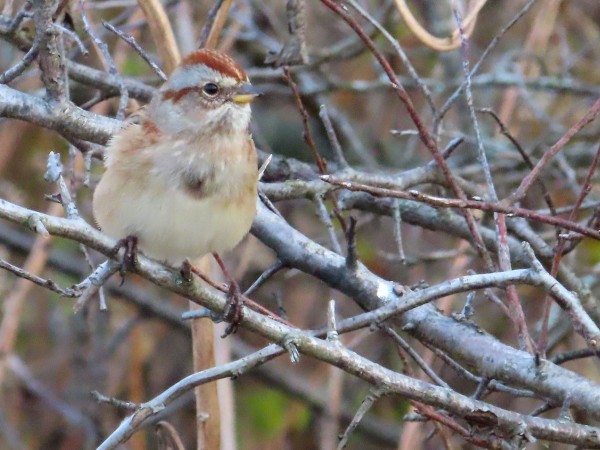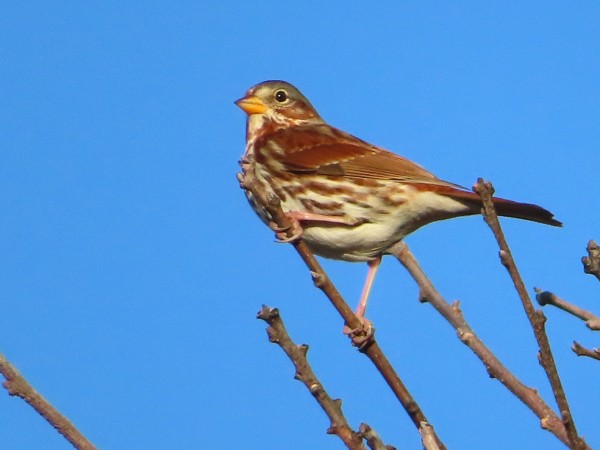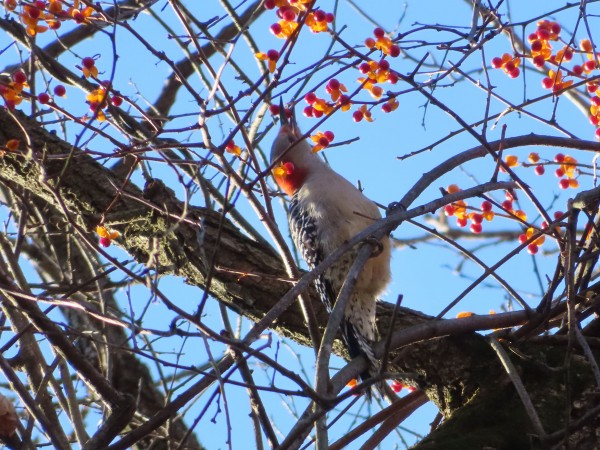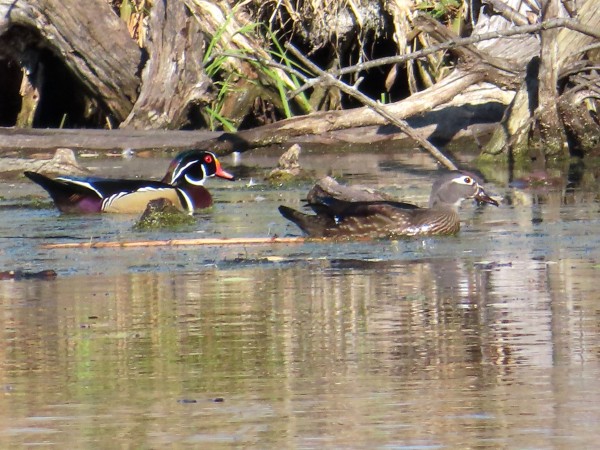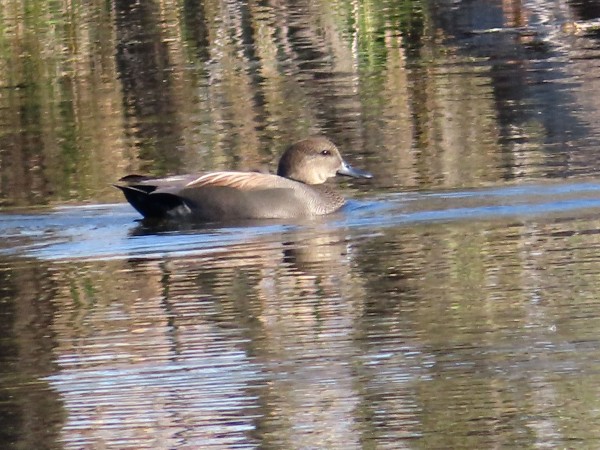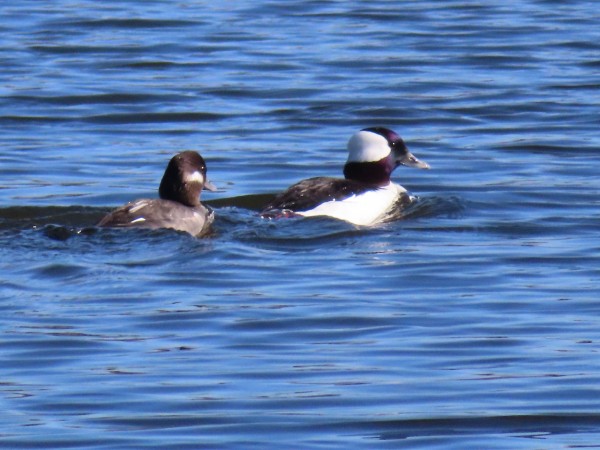Chuck's Birding Report #86
02 November - 08 November 2021
Dear fellow flock of birders,
Some of the trees still have colorful foliage. However many are losing or have lost their leaves. The trees that are bare are wonderful for birders because we can really see the birds in leafless trees. There’s only one problem. Many of the migrants that pass through have already passed through so the advantage has been a bit late.
The Crabapple Collection is still providing crabapples for several species of birds. The smaller birds like House Finches, Purple Finches and American Goldfinches look for fruit that is ripe and soft since they can only eat little pieces of the crabapples at a time. Cedar Waxwings can swallow whole crabapples if small enough or eat small bits at a time. American Robins and European Starling can eat whole crabapples. Not all crabapples ripen at the same time so the birds are very selective about the trees they feed on. Today I saw several Wild Turkeys flailing around in a couple crabapple trees trying to reach for crabapples to swallow whole. The flailing, with some breakage of branches, is not appreciated by the curator.
The last time I saw our family of 4 Sandhill Cranes, 2 adults and 2 colts, was last Tuesday. I may have just missed them or they could have left already. Hopefully we can see them tomorrow.
I have not seen the Northern Shrike recently either. It may have moved on too.
Okay, what birds am I seeing? Last Tuesday our group saw a small flock of newly arrived American Tree Sparrows. They are part of a group of species that only come in the winter. They were feeding on grass seeds either fallen on the wide hiking path just north of Curtis Prairie or landing on the stalks of some of the tall grasses and walking sideways to reach the seed heads and eat the grass seeds. They have a rusty cap, a brown eyeline, a beak whose upper mandible is black and lower mandible is yellow, a clean breast that has a single, smudgy spot in the center and wings with white wingbars. A photo of one perched in a tree is included.
Another species I’ve been seeing often is the Fox Sparrow. I’m seeing most of them near the parking lot and in the gardens surrounding the Visitor Center and near the area around the pump house. To me they are very striking with their gray face with rusty red accents on the face, wings and tail, with the same colored spotted all over the white breast and belly. A photo is included.
There are increasing numbers of Dark-eyed Juncos all over the Arboretum. I saw 24 today. They, like the American Tree Sparrow, are only here in the winter.
I see Red-bellied Woodpeckers every day I go birding but today I was treated to a Red-bellied that was eating berries from the Asian Bittersweet vines that climb high into the trees. Right at the base of Icke Boardwalk there is a vine with lots of berries and the Red-belly was feasting on many of the berries. In the winter we sometimes see Hermit Thrushes eating these berries in the same place so look up when leaving Icke Boardwalk to see who might be eating those berries. A photo of the Red-belly and the bittersweet berries is included.
There are still Red-breasted Nuthatches in the Pinetum. I saw and heard 4 of them today. They still are feeding on the seeds of open pinecones.
My last group of photos include waterfowl I saw in the ponds in Gardner Marsh. As I mentioned earlier the waterfowl are the next big migratory group of birds to arrive in Dane County. As the temperatures turn colder up north and the lakes freeze over the waterfowl begin migrating south. I’ve seen large numbers of Northern Shovelers in both Gardner Marsh and on Lake Wingra. The term shoveler refers to their distinctive large beaks. They often skim the surface and shovel in food while doing so. Included is a photo of a group of Northern Shovelers. A female and male are standing on a log while others in the water are sleeping. Note the big beaks and the plumage of each sex.
There are still a few spectacularly plumaged Wood Ducks around. A photo of a male and female Wood Duck is included. They will soon be leaving.
There were three Gadwalls in Gardner Marsh today. I was able to get a photo of the male but not of the female. They have a bit of a squarish shaped head. A real close up shot would show lots of details in their plumage. The photo included does not show that detail very well.
An American White Pelican circled over Gardner Marsh on Saturday. They are such an elegant white bird with black wing tips. I especially like seeing a flock of these pelicans circling around while the sun reflects off their white wings and bodies. At certain points in the circling the white appears to flash. It’s an impressive display. A photo of a single pelican is included.
I also saw a single female Bufflehead at Gardner Marsh. If you want to see lots of Buffleheads go to University Bay. The males which are mostly white are especially easy to pick out among the thousand black American Coots. The female Bufflehead is mostly black with a white spot on the side of its head. A photo of a pair of Buffleheads is included.
My last photo is of a leucistic American Robin with abnormal white patches on its feathers. I’ve seen several leucistic robins this year which seems unusual.
That’s the bird report for the past week.
Good health to all of you and good birding too,
Chuck

